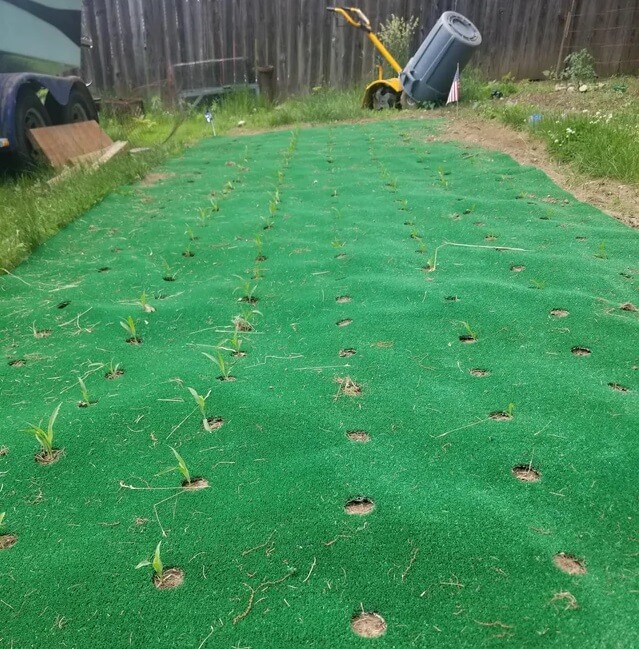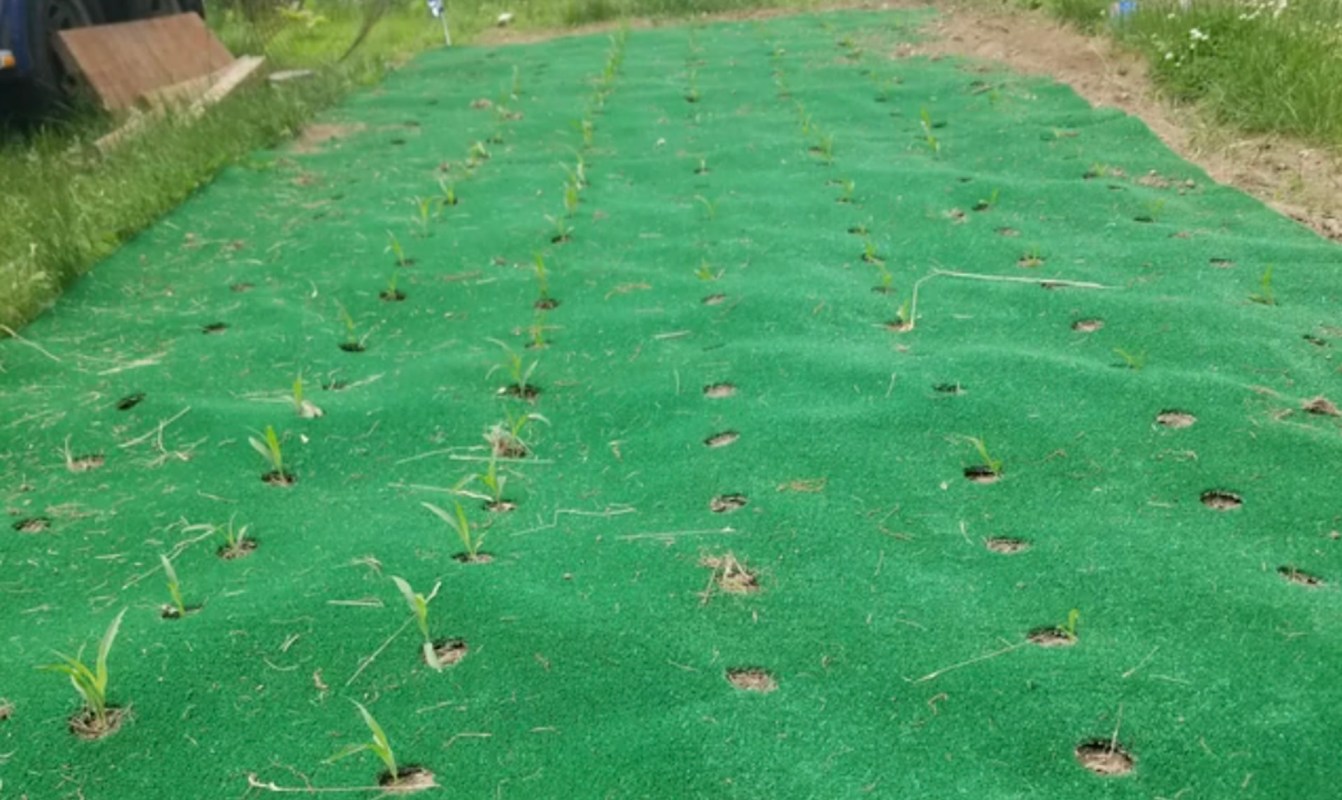A gardener sparked debate by sharing an eyebrow-raising landscaping choice on Reddit three years ago, and the reason for the debate is sadly more relevant today than the day of the post.
"Experimenting with our corn field... astroturf with corn planted 8x8," the poster wrote. "Thoughts?"
The poster said they wanted to save on mulch and had a bunch of artificial turf. They had tried a similar, smaller project with their tomato crop the year prior.
"All I know is that as cool as it looks, studies have shown that AstroTurf creates more reflected heat than bare ground or even concrete paths when exposed to the hot sun," one commenter wrote. "I'd be very worried about this degrading your soil and unnecessarily stressing your plants."

Another user expressed concern about damaging the microbe network in the soil and the leaching of plastic and other toxins into the environment.
It's best to avoid turf, especially when edible crops are involved. In this instance, it wasn't clear what the issue was; the synthetic surface seemed to be a solution in search of a problem.
The decision was akin to other interesting yard choices featuring turf. Many people are turning to the plastic-based material as an alternative to grass when rewilding provides many more benefits and no risks.
Whereas turf requires upkeep in the form of cleaning debris and, yes, even watering, native landscapes conserve water and save money and time otherwise spent on maintenance. A natural yard can reclaim 175,000 gallons of water per year and doesn't require fertilizer, pesticides, or weed control.
Native plants also benefit wildlife by providing diverse ecosystems for pollinators, which in turn help humans by protecting our food supply.
Native plants are four times more attractive to pollinators, according to the Penn State University Center for Pollinator Research, and bees, moths, butterflies, other insects, bats and birds are "critical for many of our food crops," according to the University of Illinois Extension.
Native lawns can feature clover or buffalo grass, or gardeners can go the route of xeriscaping. And if that sounds like a bit much, a partial or piecemeal native takeover is a good first step, as it allows homeowners to proceed at their own pace.
Join our free newsletter for easy tips to save more, waste less, and help yourself while helping the planet.









